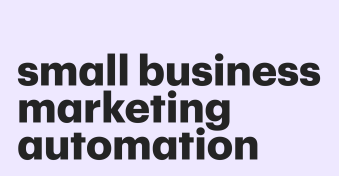With the world of business continually changing and evolving, modern companies like yours can only keep up if internal processes are up to date and optimized for maximum competitiveness.
That’s where end-to-end-process automation comes in handy. Let’s examine what it is and how you can use it.
Key takeaways:
- Modern businesses typically use end-to-end automation to keep their internal affairs running smoothly and to support their workforces.
- You can apply it to various processes throughout a business.
- Companies that use dedicated software to power end-to-end process automation can reap various benefits thanks to the inherent advantages that come with it.
What is end-to-end process automation?
End-to-end process automation involves using technology to automate an entire business workflow, from initial tasks to decision-making and monitoring, aiming to improve efficiency and reduce manual intervention.
The benefits of end-to-end process automation
Automating your end-to-end business processes comes with some major pros.
Improved efficiency
Automation can streamline business processes and make them as efficient as possible.
That’s because it helps employees focus exclusively on tasks only they can perform, leaving them more time to dedicate to these and taking on any automatable responsibilities for them.
Boosted morale
As automation removes the need for employees to carry out the same monotonous tasks hour after hour, it also creates more time for them to dedicate to meaningful work that allows their skills to shine.
Consistency
When every instance of a task is repeated to the same high standard, you achieve greater consistency, too.
This, in turn, increases the efficiency of specific workflows. It also reduces the likelihood of human error.
Modernization
Staying on top of new developments also helps you stay ahead of the competition.
That’s one reason modernizing internal processes is so vital and end-to-end automation so incredibly valuable.
What types of business processes can be automated?
So, end-to-end process automation sounds pretty enticing — but it’s not suitable in every scenario. In fact, not all processes can or should be automated.
That’s why we’ve compiled a checklist of qualities that make a business process suitable for automation.
Repetitive
Automation enables you to repeat a task over and over.
That’s very convenient when you have to do the same job many times and in the same way because while this can quickly become tiring for humans, machines won’t grow bored or long for a sense of variety.
One example would be entering data into a spreadsheet.
While individual values may vary, the task itself is suitably repetitive in that a single piece of information is entered into a cell over and over ad infinitum.
Another example would be putting together contracts or documents — especially if your paperwork doesn’t tend to vary each time.
With PandaDoc, you can generate these from several specifically designed automated templates rather than spend hours constructing them from scratch each time.
Fact-based
As helpful as it can be, automation can’t think for itself, so you’ll need to choose tasks that don’t call for subjectivity, opinions, or original thought.
The more fact or data-based a job is, the more suitable it is for automating.
Time-consuming
While not all processes that take a lot of time can be automated, a chunk of them can.
If your employees have to spend ages on something, it’s worth seeing whether automation could make it more efficient.
For example, a software engineer might automate documentation workflow.
This means they could avoid typing this out by hand and instead empower an AI to track their actions.
Unbiased
Automated programs are also less biased than humans.
This can work to your advantage when you’re looking for the next process to automate.
Recruitment professionals, for example, will typically need to filter through many applicants.
The less bias involved in this process, the greater the chances of fair hiring practices, which is why automation is helpful here.
How to analyze what your business can automate
Getting started with workflow automation apps will go more smoothly if you know what you’re looking to automate — but how do you determine this?
Asking the right questions can guide your analysis and help you pick out the best tasks for automation.
What’s taking my teams a lot of time?
Automated tools can be huge time-savers, so it’s helpful to apply them to tasks that take significant chunks out of your employees’ schedules.
Which processes don’t need human input?
Another great way of pinpointing items to automate is to figure out where your employees’ input is and isn’t required.
How can I optimize each workflow?
Sometimes, the best approach is to put every workflow under a metaphorical microscope and pick apart the ways they could be more efficient.
This helps you identify how those workflows could be optimized, including through automation.
Am I using data as much as I can?
Automation is ideal for gleaning fact-based insights from the data you collect.
If you think you could benefit from using more data, automation is your friend.
Where do my teams need support?
With automation, it’s easier than ever to help your employees work more efficiently. So, ask for their feedback and then figure out how you can automate particular tasks to support them.
What isn’t working?
While it’s not a universal band-aid, automation is highly versatile and valuable in many contexts.
That’s why it can be helpful to identify problem areas and see whether automating relevant processes could fix these issues.
Which processes am I looking to scale up?
Upscaling doesn’t have to be stressful if you use automation correctly.
It’s wise to check whether any areas could do with scaling up so you can start using automation to make it happen.
How does business process automation software work?
In a nutshell, business process automation involves taking specific tasks and programming artificial intelligence software to complete them for you.
This learning process can be as simple or extensive as you need, making it highly flexible.
You might only use automation for one or two tasks. However, you could integrate it into a whole range of internal processes.
Either way, your business process automation software will handle these tasks for you and ensure they’re completed in a timely and consistent fashion.
Since automated systems don’t need to take breaks like humans do, this software can technically run at all hours of the day and night. This means it can handle tasks for your business nonstop.
End-to-end process automation industry examples
To give you a better idea of what end-to-end process automation looks like in practice, we’ve put together some industry examples.
Healthcare
Healthcare companies can use automation to compare patient symptoms to a database, log their details, and cross-reference the best treatment options.
Entertainment
Taking an episode of a TV show from the original concept to the final product is an example of an end-to-end process.
You could deploy automation to perform quality checks, proofread scripts for errors, and/or gather data on test audiences.
Software
Software engineers will often be involved in the end-to-end process of thoroughly testing a new piece of software.
They can use automation to log bugs, track updates, monitor feedback, and record what they’re doing to improve apps in progress.
Refining an automated end-to-end business process
End-to-end automation can refresh and enhance your internal business processes — provided you’re using it right.
The key to this is arming yourself with the proper knowledge and tools.
When it comes to end-to-end contract and document management automation, though, PandaDoc is the perfect solution.
You can create templates, automate workflows, and keep everything secured in one place—ensuring a smooth process from start to finish.
Whatever you need to manage, be it contracts, sales documents, or anything else, PandaDoc provides everything you need in an end-to-end automation solution.
Why not request a demo today and see how much time and effort you can save?


